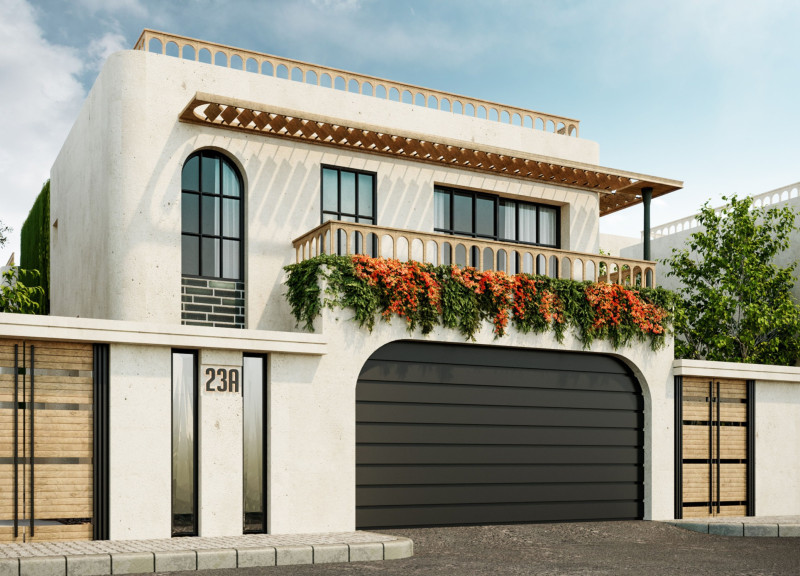5 key facts about this project
At its core, the project represents an innovative response to contemporary architectural challenges, addressing not just aesthetic considerations, but also practical needs. The design’s primary function is to create a multi-use space that not only meets the demands of its users but also engages them with the environment in which it resides. This duality of function and experience is evident in the spacious layouts and flexible interiors, which allow for diverse activities and foster communal interaction.
One of the notable aspects of the design is the meticulous attention to materiality. The project employs a combination of natural and engineered materials that complement each other while enhancing the overall aesthetic appeal. The use of local stone provides a sense of connection to the landscape, grounding the structure within its geographical context. Additionally, sustainably sourced wood elements contribute warmth and texture, establishing a harmonious balance between robustness and elegance. Large glass panels are strategically incorporated, ensuring ample natural light throughout the spaces while blurring the line between indoor and outdoor environments. This thoughtful approach not only highlights the importance of sustainability but also reinforces the project's commitment to energy efficiency and reducing its carbon footprint.
The architectural layout is characterized by an open floor plan that facilitates fluid movement throughout the space. Key areas within the project are designed with purposeful intent; communal spaces are situated centrally to encourage social interaction, while private areas are thoughtfully located to provide necessary seclusion. This strategic organization reflects an in-depth understanding of human behavior and how spatial configurations can influence interactions among occupants.
Unique design approaches are evident in the project’s integration of biophilic elements, which enhance the connection to nature. Green walls and rooftop gardens are introduced, serving both aesthetic and ecological functions. These features not only create visually appealing environments but also promote biodiversity and contribute to urban cooling, underscoring the project's commitment to environmentally conscious design. Furthermore, the choice of colors and textures employed in the interior design draws inspiration from the local environment, creating a cohesive narrative that resonates through every aspect of the project.
The architectural design also emphasizes the importance of heritage and cultural context. By engaging with local traditions and materials, the project pays homage to its surroundings while simultaneously looking forward. This blend of historical awareness and modern sensibilities creates a timeless quality, ensuring the project will serve its community well into the future.
Moreover, the use of innovative technologies within the project enhances its functionality. Smart home systems allow for energy management and user-friendly controls, while advanced building techniques ensure structural integrity and lower maintenance costs over time. These considerations reflect a comprehensive approach to design, where functionality and technological advancement coexist harmoniously.
For those interested in delving deeper into this architectural endeavor, I encourage you to explore the project presentation further. Reviewing the architectural plans, architectural sections, architectural designs, and architectural ideas will provide a greater insight into the intricate details and innovative thinking that underpins this remarkable project, illuminating how it successfully marries functionality with aesthetic sensibilities in a meaningful way. The project's design speaks to the potential of modern architecture to create spaces that are not only functional but also enriching for their inhabitants and surroundings alike.


 Abdulrahman Hisham Mohamed Marzook,
Abdulrahman Hisham Mohamed Marzook,  Ahmed Emad Hamed Elsayed Elkholany,
Ahmed Emad Hamed Elsayed Elkholany,  Mohamed Mamdouh
Mohamed Mamdouh 























